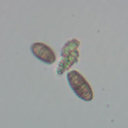Ginsenoside Rd blocks AIF mitochondrio-nuclear translocation and NF-κB nuclear accumulation by inhibiting poly(ADP-ribose) polymerase-1 after focal cerebral ischemia in rats.
Keywords
Abstract
Our previous clinical and basic studies have demonstrated that ginsenoside Rd (GS-Rd) has remarkable neuroprotective effects after cerebral ischemia but the underlying mechanisms are still unknown. In our latest studies, we revealed that GS-Rd could prevent mitochondrial release of apoptosis-inducing factor (AIF) and reduce inflammatory response following transient focal ischemia in rats. Poly(ADP-ribose) polymerase-1 (PARP-1) is required for both AIF release from mitochondria and NF-κB-mediated inflammation. Here, we investigated whether GS-Rd could act on PARP-1 and subsequently affect AIF translocation and NF-κB activation. Sprague-Dawley rats were treated with GS-Rd (10 mg/kg) 30 min before surgery with the right middle cerebral artery occlusion, and at different time points following cerebral ischemia, brain tissues were collected for western blotting analysis. Our results showed that GS-Rd significantly attenuated ischemia-triggered increased levels of Poly(ADP-ribose), an enzymatic product catalyzed by PARP-1, but not altered the expression of PARP-1 per se. Meanwhile, GS-Rd pretreatment reduced AIF mitochondrio-nuclear translocation and inhibited NF-κB p65 subunit nuclear accumulation after cerebral ischemia. Therefore, our findings provide the first evidence that GS-Rd can inhibit PARP-1 activity and sequential AIF translocation and NF-κB nuclear accumulation, which may be responsible for GS-Rd's neuroprotection against both neuronal cell death and inflammation after ischemic stroke.




